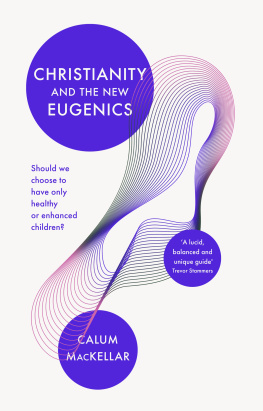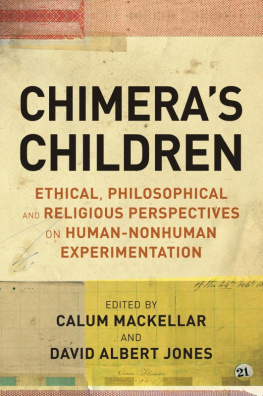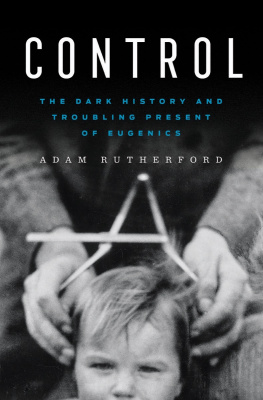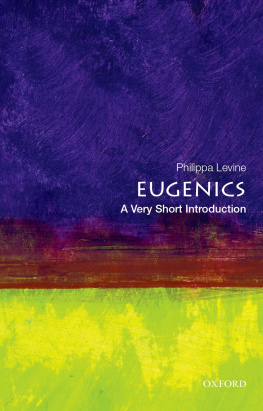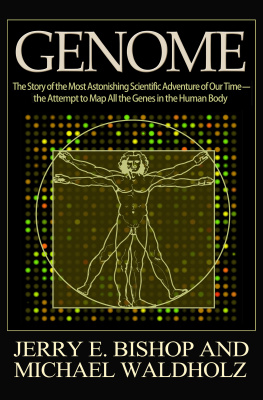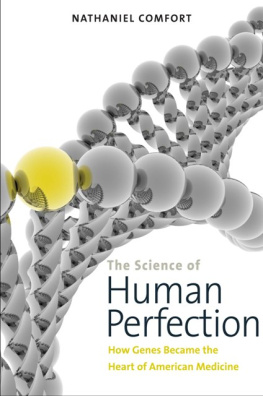Chapter 1
F. Galton, Inquiries into Human Faculty and Its Development (London: Macmillan, 1883), p. 25, n. 1.
C. MacKellar and C. Bechtel (eds), The Ethics of the New Eugenics (New York: Berghahn, 2014), p. 3.
F. Galton, Hereditary Genius (London: Macmillan, 1869), v.
Ibid., p. 1.
Quoted in M. Lind, Churchill for Dummies, Spectator , 24 April 2004.
L. Koch, Eugenics, in P. Atkinson, P. Glasner and M. Lock (eds), Handbook of Genetics and Society: Mapping the New Genomic Era (London: Routledge, 2009), pp. 437447 (p. 446).
J. Watson, Values from Chicago Upbringing, in D. A. Chambers (ed.), DNA: The Double Helix Perspective and Prospective at Forty Years (New York: New York Academy of Science, 1995), pp. 194197 (p. 197).
G. K. Chesterton, Eugenics and Other Evils (Seattle: Inkling, 2001), ch. 1, p. 13.
For some, an intervention may be a therapy; but for others, the same intervention may be an enhancement, leaving a grey area in between. Moreover, it can be unclear whether therapies whose primary purpose is curing diseases but that have a secondary potential of improving performance should be classed as enhancements or treatment.
P. Moore, Enhancing Me: The Hope and the Hype of Human Enhancement (Chichester: Wiley, 2008).
>.
>.
D. B. Paul, Controlling Human Heredity: 1865 to the Present (Amherst: Humanity, 1998), pp. 34.
Ibid., p. 135.
D. King, The Persistence of Eugenics, Human Reproduction and Genetic Ethics 5.2 (1999), pp. 3135.
L. M. Silver, Remaking Eden (London: Phoenix [Orion], 1999), p. 277.
J. Savulescu, Procreative Beneficence: Why We Should Select the Best Children, Bioethics 15.56 (2001), pp. 413426.
C. B. Cohen, Designing Tomorrows Children, in A. R. Chapman and M. S. Frankel (eds), Designing Our Descendants (Baltimore: Johns Hopkins University Press, 2003), pp. 296310 (p. 305).
Silver, Remaking Eden , p. 11.
D. B. Paul, Eugenic Anxieties, Social Realities, and Political Choices, in C. F. Cranor (ed.), Are Genes US? The Social Consequences of the New Genetics (New Brunswick: Rutgers University Press, 1994), pp. 142154; quoted in Silver, Remaking Eden , p. 249.
C. MacKellar and C. Bechtel (eds), The Ethics of the New Eugenics (New York: Berghahn, 2014).
A. Huxley, Brave New World (New York: Harper 1932 [repr. 1998]).
Silver, Remaking Eden , p. 10.
Chapter 2
D. J. Galton, Greek Theories on Eugenics, Journal of Medical Ethics 24.4 (1998), pp. 263267.
Plato, Republic , Book 5, in A. Bailey, S. Brennan, W. Kymlicka, J. Levy and A. Sager (eds), The Broadview Anthology of Social and Political Thought: From Plato to Nietzsche , vol. 1. (Peterborough, Ont.: Broadview, 2008), p. 87.
[A]nd whose infants, if they chanced to be puny or ill-formed, were exposed in a chasm... and left to die (W. Berns, Making Patriots [Chicago: University of Chicago Press, 2001], p. 12).
F. Galton, Typical Laws of Heredity, Nature 15 (1885), pp. 492495, 512514, 532533. Galtons parade illustration of this reversion is the rarity of giants: Giants marry much more rarely than medium men, and when they do marry they have but few children. It is a matter of history that the more remarkable giants have left no issue at all (p. 492).
F. Galton, Hereditary Genius (London: Macmillan, 1869), pp. 5, 11.
This included a number of Nordic countries, such as Denmark, Sweden, Norway and Finland. See MacKellar and Bechtel, Ethics of the New Eugenics , pp. 2124.
For more information, see A. Bashford and P. Levine (eds), The Oxford Handbook of the History of Eugenics (Oxford: Oxford University Press, 2010).
C. Rosen, Preaching Eugenics: Religious Leaders and the American Eugenics Movement (Oxford: Oxford University Press, 2004); G. J. Baker, Christianity and Eugenics: The Place of Religion in the British Eugenics Education Society and the American Eugenics Society, c .19071940, Social History of Medicine: The Journal of the Society for the Social History of Medicine 27.2 (2014), pp. 281302.
E. W. Lutzer, Hitlers Cross (Chicago: Moody, 1995); S. F. Weiss, The Nazi Symbiosis: Human Genetics and Politics in the Third Reich (Chicago: University of Chicago Press, 2010); G. Broberg and N. Roll-Hansen (eds), Eugenics and the Welfare State: Norway, Sweden, Denmark, and Finland (East Lansing: Michigan University Press, 2005).
D. Wikler, Can We Learn from Eugenics?, Journal of Medical Ethics 25.2 (1999), pp. 183194 (p. 185).
>.
>; J. Glad, Future Human Evolution: Eugenics in the Twenty-First Century (Schuylkill Haven: Hermitage, 2008), p. 57.
Correspondence from Adolf Hitler to Reichsleiter Bouhler and Dr Karl Brandt in October 1939, backdated to 1 September 1939. Quoted in German National Ethics Council, Opinion: Self-Determination and Care at the End of Life (Berlin: Nationaler Ethikrat, 2006), p. 33.
A. Hoche and K. Binding, Die Freigabe der Vernichtung Lebensunwerten Lebens (Leipzig: Felix Meiner, 1920).
A. Hitler, Mein Kampf , vol. 1, tr. R. Manheim (Boston: Houghton Mifflin, 1943), p. 255; quoted in E. Black, War Against the Weak (New York: Thunders Mouth, 2004), p. 274.
P. Lffler (ed.), Bischof Clemens August Graf von Galen: Akten, Briefe und Predigten 19331946 (Paderborn: Ferdinand Schningh, 1996), p. 874.
B. A. Griech-Polelle, Bishop von Galen: German Catholicism and National Socialism (New Haven: Yale University Press, 2002).
>.
D. Wikler, Can We Learn from Eugenics?, Journal of Medical Ethics 25.2 (1999), pp. 183194.
The Eugenics Review 1.1 (April 1909), inside front cover. Mentioned in Baker, Christianity and Eugenics, pp. 281302 (p. 283).
W. R. Inge, Some Moral Aspects of Eugenics, The Eugenics Review 1.1 (1909), pp. 2636 (p. 29).
Ibid., p. 33.
Baker, Christianity and Eugenics, p. 284. Baker also notes that Inges contribution to the first issue of the The Eugenics Review certainly endorsed the potential power of eugenics (ibid., p. 285).
>.
Ibid., 70.
G. R. Searle, Eugenics and Politics in Britain in the 1930s, Annals of Science 36 (1979), pp. 159169.
D. J. Kevles, Au nom de leugnisme (Paris: Presses Universitaires de France, 1995), pp. 88, 162.
G. Williams, The Sanctity of Life and the Criminal Law (New York: Knopf, 1957), pp. 8081.
>.
J. S. Huxley, Eugenics and Society, The Eugenics Review 28.1 (1936), pp. 1131 (p. 11).
Ibid. p. 24.
Quoted in J. Quintavalle, Better by Accident than Design, in Institute of Ideas (compiled E. Lee), Designer Babies: Where Should We Draw the Line? (London: Hodder & Stoughton, 2002), p. 73.
O. K. Obasogie, The Eugenics Legacy of the Nobelist Who Fathered IVF, Scientific American , 4 October 2013.
Ibid.
A. Farmer, By Their Fruits: Eugenics, Population Control, and the Abortion Campaign (Washington, D.C.: Catholic University of America Press, 2008), pp. 150151.
M. L. Carden, Oneida: Utopian Community to Modern Corporation (Syracuse: Syracuse University Press, 1998), p. 61.
Ibid., p. 63.
For a discussion relating to the interaction of Christian beliefs and eugenics, see G. J. Baker, Evolution, Eugenics and Christian Mission; Health and Welfare in Transition: London and New York, c.18651940, Wellcome History 40 (2009), pp. 1213. See also C. Rosen, Preaching Eugenics: Religious Leaders and the American Eugenics Movement (Oxford: Oxford University Press, 2004).
Black, War Against the Weak , p. 146; D. J. Kevles, In the Name of Eugenics (Cambridge, Mass.: Harvard University Press, 1995), pp. 99100.
T. Roosevelt, Outlook (3 January 1914); quoted in E. A. Carlson, The Eugenic World of Charles B. Davenport, in J. A. Witkowski and J. R. Inglis (eds), Davenports Dream: 21st Century Reflections on Heredity and Eugenics (Cold Spring Harbor: Cold Spring Harbor Laboratory Press, 2008), pp. 5976 (p. 59).

